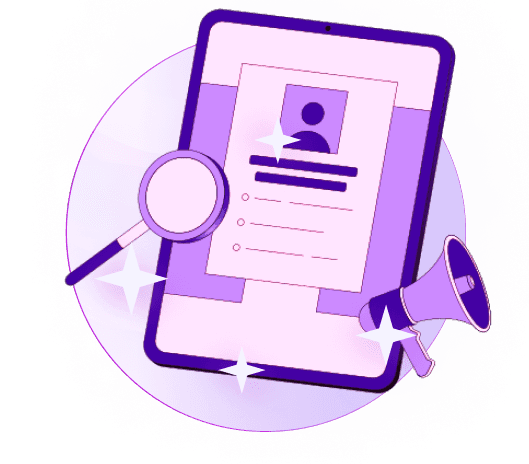Blogs
Articles

What is AI Data Enrichment?
The growth of data enrichment reached an impressive 80% in 2018. AI data enrichment has become crucial for businesses struggling with unstructured information.
Companies storing one petabyte of data pay around $650,000 each year for data management. They employ just a small portion of that data well. Data enrichment steps in to solve this problem. It corrects errors, fills gaps and enhances existing datasets.
Let's take a closer look at what AI data enrichment really is, how it works, and what benefits it brings. You'll also learn the key steps of the enrichment process that turn raw data into applicable information.
What is AI enrichment?
AI enrichment marks a transformation in organizations' data processing and enhancement methods. Traditional methods take a back seat as AI enrichment uses artificial intelligence technologies to refine and boost data quality that leads to more reliable strategic decisions.
The system corrects inaccuracies, fills missing details, and combines information from multiple sources into a unified and detailed dataset. AI enrichment focuses on improving existing data rather than collecting new information - like in upgrading a smartphone's capabilities instead of buying a new device.
AI enrichment's core strength comes from sophisticated machine learning algorithms and natural language processing to:
Automate the enrichment process with minimal human intervention
Identify patterns and relationships within existing data
Learn from historical data patterns and continuously improve over time
Handle large volumes of data quickly and accurately
Machine learning algorithms have altered the map of data enrichment. Businesses now process information at unprecedented speed and efficiency. To name just one example, these algorithms analyze customer behavior data and automatically add predictive insights to customer profiles.
AI-driven enrichment solutions boost data accuracy by learning from past patterns. Organizations can learn about deeper insights compared to manual methods alone. More available data helps the system work better over time, which reduces errors and streamlines processes.
Organizations that implement AI enrichment gain advantages through faster data processing and sophisticated analysis capabilities. Raw information becomes valuable business intelligence.
What is AI Data Enrichment?
AI data enrichment uses artificial intelligence with data improvement techniques to turn raw data into valuable business assets. The process combines first-party data from internal sources with external third-party information. This creates a complete dataset that provides deeper insights than the raw data.
AI data enrichment stands out from traditional data processing because it spots patterns, anomalies, and trends that humans might miss. Raw customer data starts out unstructured and barely useful. AI-powered enrichment transforms this data and makes it much more valuable.
AI data enrichment has two main goals:
Standardize data formats to keep datasets consistent
Add contextual information to give the original data more meaning
AI data enrichment does more than just clean data - it adds relevant context to existing information. To cite an instance, see how AI can improve customer profiles by adding demographic details, online behavior patterns, purchase history, and social media activity. Companies can create better customer segments and custom marketing strategies with this enriched view.
The AI Data Enrichment Process
A well-laid-out approach will help you implement an effective AI data enrichment program. Here's a five-step process that will give you systematic ways to improve your data assets and get the most from AI technologies.
Step 1: Assess your current data
Your first task is to analyze your existing datasets to understand their makeup and limitations. This assessment helps you spot the types of data you have and find specific gaps to fill. A clear picture of your enrichment goals from the start will arrange all future work with your organization's needs.
Step 2: Clean and prepare the dataset
Your data needs proper cleaning to remove errors before enrichment starts. This vital phase removes duplicate entries, fixes inaccuracies, and makes formats consistent across records. Research shows companies spend about 60-80% of their time cleaning dirty data before analysis.
Step 3: Identify external data sources
Once the data is clean, you need to find the right internal and external sources to increase your existing information. Your internal sources usually include CRM systems, sales records, and website analytics. External sources cover third-party databases, social media platforms, and industry reports. You want to find matching data that fits your enrichment goals and fills the gaps you found.
Step 4: Use AI to enrich data
Now you can let AI algorithms improve your datasets automatically. Machine learning models spot patterns, predict outcomes, and suggest insights human analysts might miss. AI works really well at processing unstructured text through natural language processing. It analyzes images with computer vision and finds unusual patterns in numbers.
Step 5: Validate and integrate enriched data
The final step is to confirm your enriched data's quality by checking it against trusted sources. This validation ensures everything is accurate before you combine it smoothly with your organization's systems like CRM or ERP platforms. Regular monitoring helps maintain data quality as new information comes in.
Benefits of AI Data Enrichment
AI data enrichment's business value goes way beyond simple data improvement. Strategic implementation of this technology brings multiple advantages that affect an organization's bottom line.
Improved data accuracy and completeness
AI algorithms excel at detecting and fixing data gaps to keep information reliable for decision-making. AI enrichment tools identify errors systematically, unlike manual processes, which makes data more trustworthy. Data accuracy becomes vital because compromised data integrity can lead to biased or harmful AI outputs.
Better customer segmentation and targeting
AI-powered customer segmentation outperforms traditional methods by spotting subtle patterns that human analysis might miss. AI creates highly distinct customer profiles by analyzing countless data points—including browsing history, purchase behavior, and social media interactions. These detailed segments enable precisely targeted marketing campaigns that boost conversion rates and customer satisfaction.
Enhanced decision-making with enriched insights
Enriched datasets improve organizational decision-making by providing deeper context and connections. AI systems deliver practical insights that reveal hidden relationships because they can process massive amounts of information. Marketers receive predictive forecasts that minimize decision risk.
Increased operational efficiency
AI automation optimizes data processing workflows. Organizations save time and effort as AI handles data enrichment tasks that once needed extensive human work. Marketing teams can dedicate resources to strategy instead of data manipulation. This efficiency extends to resource allocation, with AI-driven segmentation directing marketing investments toward high-value customer groups to improve ROI.
Support for compliance and data governance
The benefits reach into regulatory compliance as well. AI data enrichment supports robust data governance frameworks by establishing consistent policies for data quality. Data enrichment tools ensure compliance with privacy regulations like GDPR and CCPA to prevent potential penalties from violations. This blend of compliance support and quality improvement builds a foundation for ethical, effective data usage throughout the organization.
How AI Data Enrichment Works?
A complex network of technologies powers successful AI data enrichment systems. These technologies work together to turn raw information into valuable insights. The way AI enriches data involves advanced computing that analyzes and relates data.
The system starts by gathering raw data from various sources like customer databases, websites, social media platforms, and surveys. This mix of information creates the base for the enrichment process.
AI algorithms then clean the collected data. They spot and fix errors, inconsistencies, and fill in missing values. This vital step makes sure the data is clean before enrichment begins.
Smart machine learning models analyze patterns in existing datasets and enrich them automatically with little human input. These systems get better over time as they learn from past data patterns, which boosts the accuracy of future enrichments.
AI-powered data enrichment works through several key technologies:
Machine Learning - Analyzes large datasets, detects patterns, and applies learned insights to new data
Natural Language Processing - Interprets human language in text, enabling sentiment analysis and keyword extraction
Predictive Analytics - Forecasts future outcomes based on historical data, enriching customer profiles with predictive insights
Conclusion
AI data enrichment helps businesses make sense of their messy, unstructured information. This piece shows how it does much more than just clean up data. It adds valuable context and insights to datasets, which helps create complete customer profiles for better targeting and tailored marketing.
The five-step enrichment process gives organizations a clear path to use this technology well. Each step builds on the last one, starting with the original assessment and ending with final validation. This well-laid-out approach turns raw information into practical business insights.
The real value of AI data enrichment shows in your bottom line. Better accuracy, smarter decisions, and smoother operations lead to stronger business results. Companies that use these technologies gain an edge over competitors by understanding their customers better and targeting them more precisely.
Not sure about using AI data enrichment in your business? You can ask experts to help you through the process at Persana to find how these tools can turn your raw data into valuable assets.
FAQ
What is AI data augmentation?
AI data augmentation is fundamentally different from data enrichment, though both improve data quality. The process mainly focuses on expanding and broadening existing datasets through synthetic or manipulated data points. Its main goal is to increase the dataset's size, quality, and variety to improve machine learning models' performance and adaptability.
This approach helps solve problems caused by limited data availability. Creating additional variations of original datasets prevents overfitting and helps models recognize patterns in new data more effectively.
What is an example of data enrichment?
Ground examples of data enrichment show its practical value in many industries. Netflix uses AI-powered data enrichment to recommend personalized content. Their system analyzes viewing patterns and user priorities to boost customer involvement.
Insurance companies' underwriting processes benefit from location data enrichment. They take simple property details like size and location and add flood zone data, crime rates, and historical weather patterns.

Create Your Free Persana Account Today
Join 5000+ GTM leaders who are using Persana for their outbound needs.
How Persana increases your sales results
One of the most effective ways to ensure sales cycle consistency is by using AI-driven automation. A solution like Persana, and its AI SDR - Nia, helps you streamline significant parts of your sales process, including prospecting, outreach personalization, and follow-up.



